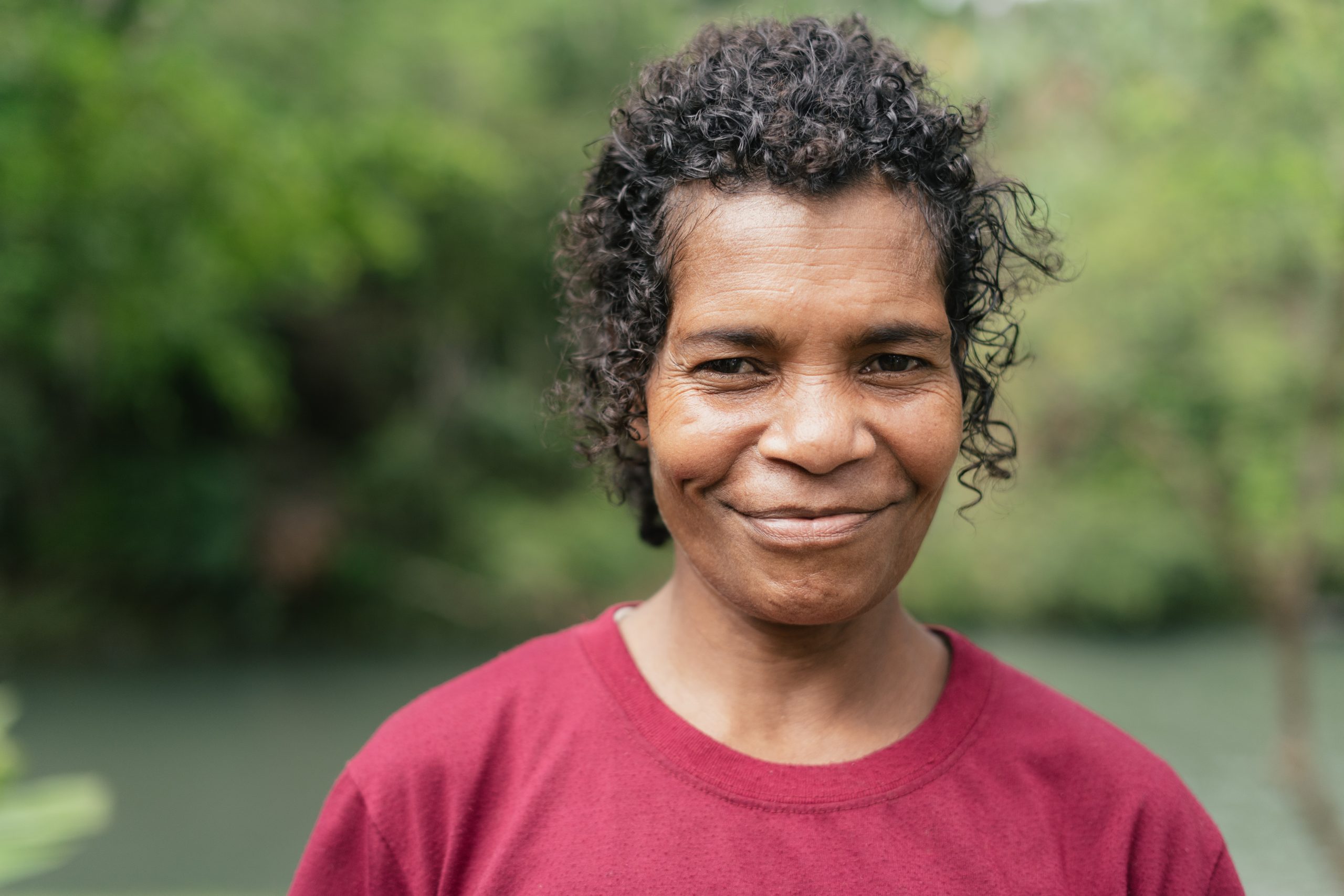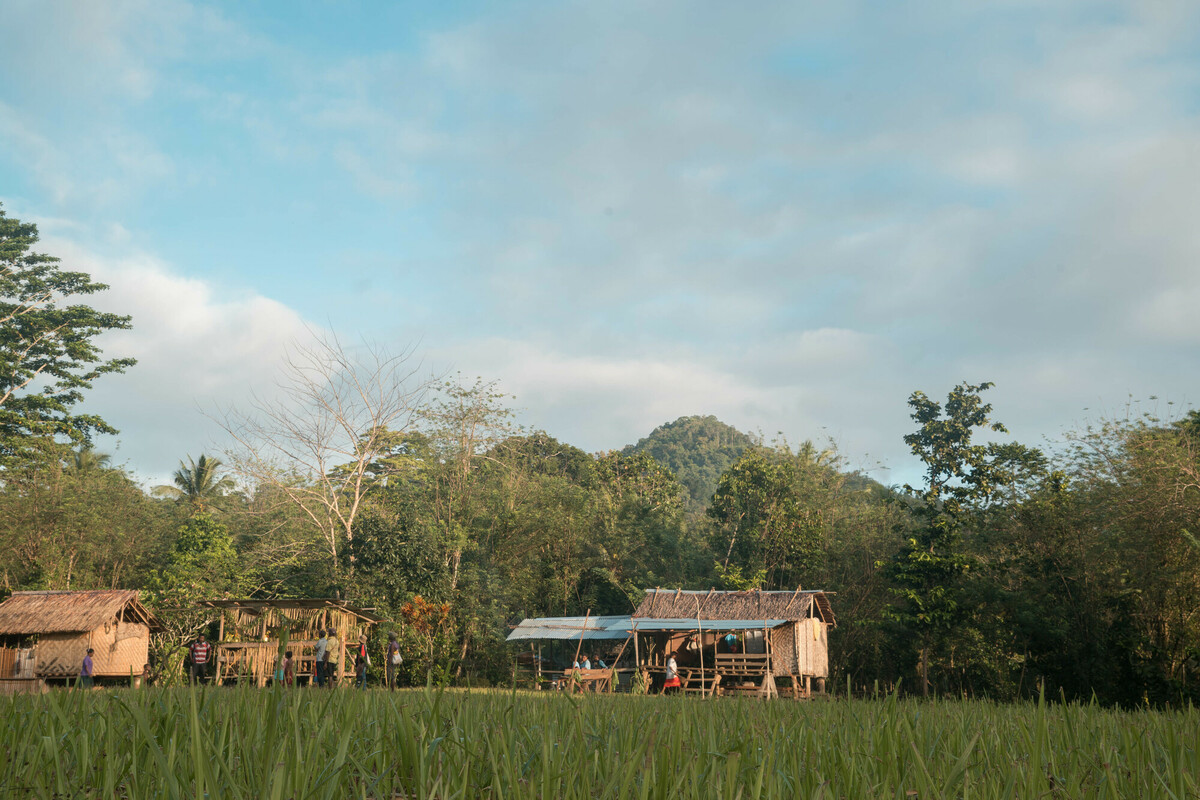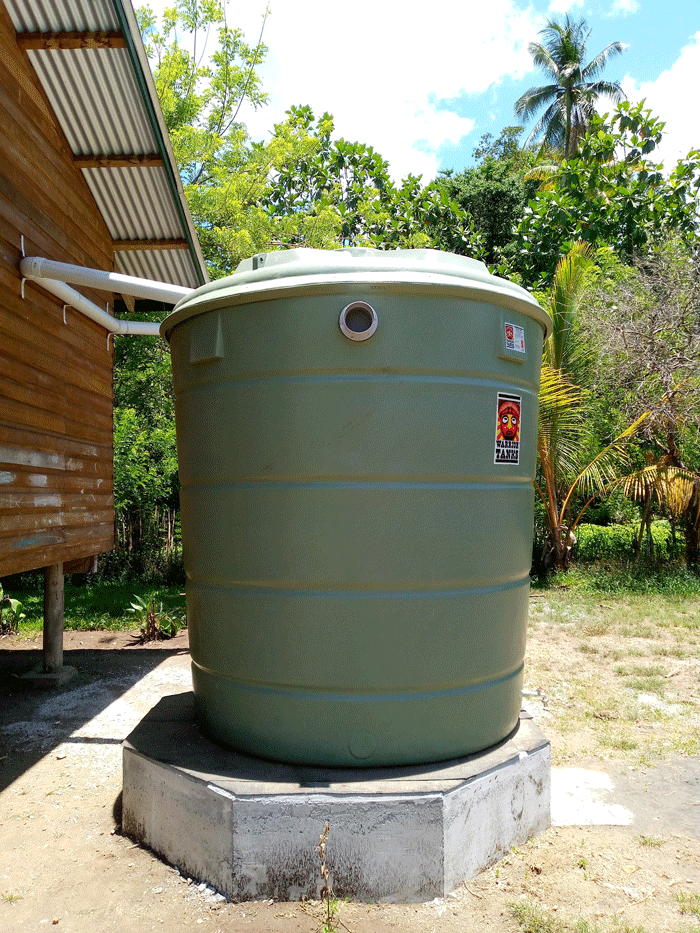How Rainforest Water Tanks Transform Lives
Access to clean drinking water is a fundamental human right, yet many people living in the rainforest still lack this basic necessity. People just like Ruthie Simbili and her family who live in Sololo, a rainforest community in Papua New Guinea.
Sololo is located approximately 300 miles from the nearest town, Alotau. For many years, people in Sololo did not have access to clean drinking water. Ruthie, pictured below, and her family relied on rivers and creeks as a drinking and cooking water source.


Ruthie from the community of Sololo, Papua New Guinea.
Often when it rains heavily and floods, which is becoming more common due to climate change, rivers become contaminated. People have to be careful when drinking or using the water to cook food.
‘Most times we get sick, or our children get sick from diarrhoea or flu from the contaminated water, so we have to walk for hours to get healthcare in another village’, Ruthie tells us.
In communities like Sololo, the absence of proper water facilities contributes to the contamination, leading to outbreaks of waterborne diseases such as diarrhoea, dysentery, and typhoid fever. Without safe access, individuals are forced to consume unsafe water, putting their health at risk, and continuing the cycle of sickness.


Houses in the village of Sololo, Papua New Guinea.
However, after Sololo recently partnered with Cool Earth, there have been significant changes in the village. The implementation of the Water Sanitation and Hygiene (WaSH) project with the Rural Water Supply and Sanitation Programme (RWSSP) has been a game-changer in the fight against waterborne diseases and the provision of clean drinking water.
One significant achievement of these projects is the distribution of water tanks to households in Sololo. These tanks serve as reservoirs for clean water, sourced from the rain.
Ruthie said they no longer have to worry about drinking water from rivers or creeks.
‘We can now collect and store rainwater for drinking and cooking our food, the installation of water tanks within Sololo has given us access to clean water which has become more convenient and equitable.’


A large green rain water collection tank stands in the centre of the image, next to a home in Papua New Guinea. The tank is connected to the iron roof of the home by a pipe that is used to collect rain water run off from the roof to store within the tank.
The impact of the WaSH projects on public health has been profound. By providing access to clean water for drinking, cooking, and personal hygiene, these initiatives have significantly reduced waterborne diseases within communities. Safe water has improved the overall health and well-being meaning less people need to visit the health centres.
The introduction of the WaSH project by Cool Earth and RWSSP, particularly the distribution of water tanks, has brought about positive transformation in communities affected by poor access to clean water and sanitation. By addressing the root causes of contamination and waterborne diseases, these initiatives have empowered individuals and communities to lead healthier and more productive lives.
Strong, resilient rainforest communities are the best protectors of their lands and territories. We need to continue supporting them if we want to keep our rainforests standing. And as we continue to prioritise investments in water infrastructure and hygiene promotion, we move closer to achieving the universal right to clean water for all.
